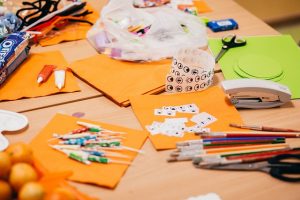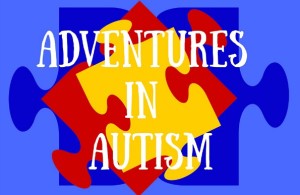If you have come here seeking to help an autistic child in your class, I commend you. Good teachers will change the world. And I hope the tips I have here will help you. These suggestions are for younger children who aren’t self-aware yet. For anyone reading this and not familiar with autism, high functioning autistic individuals are what we are talking about. Severely autistic children are nonverbal and will not be placed in a main stream classroom.
These young children will need the most help managing the stress and anxiety school can induce. But the same principals apply to older children, just not with as much intensity. As the teacher in the classroom you are on the front lines. And your support can make all the difference in a young life.
Autistic with no diagnosis?
 It has been my experience that the more-high functioning the child, (less severe the autism challenges) and the less experienced the parents are with autism, the later the diagnosis.
It has been my experience that the more-high functioning the child, (less severe the autism challenges) and the less experienced the parents are with autism, the later the diagnosis.
So, you may have children in your class who aren’t even aware why they are struggling. They could be autistic or have an unrecognized learning disability.
That is why it matters so much that you know what to do to help them. You may need to approach the administration to get an aide or some other support. But these tips will help you know if that support is needed and guide you when things get difficult. And I hope it will help you be a more confident teacher.
Discipline is different
When a child is autistic, their brain is different. It’s like comparing a PC to a MAC computer. They both function wonderfully when you know how they work, but until you do they can be confusing. Discipline is one of those areas that is very different than how you grew up.
 For autistic kids positive reinforcement is the best way, and really the only lasting way, to modify behavior. Try to stay away from punishments because that will only make the situation worse.
For autistic kids positive reinforcement is the best way, and really the only lasting way, to modify behavior. Try to stay away from punishments because that will only make the situation worse.
And never take recess away. That is the break the child needs to reset their behavior and be ready to try again. Instead I will teach you a few tricks for positive reinforcement.
Small steps
In ABA (autism) therapy they teach children skills by breaking them down into small steps. And after each success they get immediate small rewards, i.e. one M&M. This encourages them to try for the next success. As a teacher I would print off a chart where the student gets a sticker reward or earns computer time for good behavior.
Make sure the expected behavior is clearly understood. You may need to explain it a few times, or even model it for the child. And I find that telling stories about my childhood (sometimes referred to as social stories) help the child grasp the concept easily. If you are interested in social stories google has several.
 Be sure to start with small goals and help them see they can succeed. Remember baby steps when setting goals to be sure they are achievable.
Be sure to start with small goals and help them see they can succeed. Remember baby steps when setting goals to be sure they are achievable.
Then as they master a skill, and see they can achieve it, gradually increase what is expected of them. But don’t go too fast or you will discourage them.
I would start with giving yourself plenty of time to master the first goal, and build slowly. That is the key to ABA, small steps to help them master skills. You are welcome to reach out to me for help creating a plan.
And the special ed team at your school will know how to implement this kind of thing. If the child attends ABA therapy their therapists are the gold standard for goal setting for the child. I’d reach out to them too.
Gauging an autistic meltdown
There are times when a child has had too much and just has a meltdown. It may be in class, or somewhere else. How can you tell if it is a true meltdown from overwhelm or a behavioral problem?
 There will be some physical symptoms like flushed face, overheating, being distracted, being tuned out to what is happening around them, and fidgeting. For my son he would fall out of his chair.
There will be some physical symptoms like flushed face, overheating, being distracted, being tuned out to what is happening around them, and fidgeting. For my son he would fall out of his chair.
But for me the hard and fast rule I use is this: when they are having a fit, and you give them what they want, does the behavior stop?
If they have any control over themselves, they will stop acting out when they get what they want. But if they are truly overwhelmed and needing help, they won’t be able to stop. At this point the child needs comfort, understanding, and a quiet place to decompress.
Help child remember their breaks
The key to managing a peaceful classroom is avoiding overwhelm and melt downs. That is why sensory breaks are a vital part of any autistic child’s day. When my son was in second grade his teacher felt overwhelmed and put my son in charge of his own sensory breaks.
 She set up a table in the corner that had his container of sand that he would play in when he was taking his break. But she wouldn’t remind him when it was time for them.
She set up a table in the corner that had his container of sand that he would play in when he was taking his break. But she wouldn’t remind him when it was time for them.
A child on the spectrum will not know how to tell when they need a break. And often these breaks are designed to keep them balanced. Missed breaks will lead to acting out. So I would set an alarm, a reminder, and make sure the child takes their break on time, every time.
Especially on challenging days this will be a life saver for you both. Consistency will keep them calm and balanced and your classroom peaceful. DO NOT take away recess as that will cause a spiral in bad behavior.
Bathroom breaks need to be longer
One of the little known facts about autistic kids is that toileting is often a challenge. For a hundred reasons any child with an autism diagnosis, or suspected diagnosis, will need longer in the restroom.
My son’s teacher didn’t understand that he needed more time and started making him hold it till lunch time because she felt he always took too long. She would even time him and send other students in after him, but that lead to teasing, greater stress, and meltdowns. Sadly we had to pull him out of public school because she was unable or unwilling to give him the support he needed.
To this day he suffers from side effects of her choices in those days. But you can help your autistic students to navigate their challenges in a supportive and encouraging environment.
(This article became too long to keep google happy, so please find the second half at How To Help An Autistic Child In The Classroom Part 2)
About Abby Christianson
Abby is capable and caring. She is learning more about Autism and parenthood every day. Having completed training to be an RBT (Registered Behavior Technician) for ABA therapy she is beginning to understand her son. And even though she is the first to admit she makes a lot of mistakes, she is so grateful to be on this journey. She comes from a family with many autistic members. She invites us to join her, as she shares her adventures. She wishes to emphasize that Autism is a difference not a defect. If you or a family member have autism, Abby wants you to know that the challenges can be overcome, and there are blessings in autism. You or your loved one are not sick or broken. Together we will teach the world this new language.
Twitter •








Are you familiar with the book, The Spark by Kristine Barnett, who is a friend of mine?
Her deeply autistic child is now one of the top astrophysicists in the world.
Perhaps her way is the best way to help an autistic child?
Thank you for the suggestion. I will check it out!